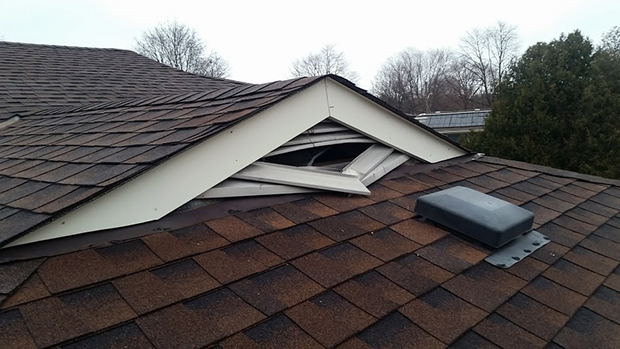Raccoons are sometimes called masked bandits, a reference to the black patches surrounding their eyes. Their reputation as a bandit goes beyond appearances – just ask anyone who’s woken up to find their lawn completely dug up or their garbage strewn across the driveway. There’s no doubt, living alongside raccoons can cause plenty of frustration for Burlington homeowners.
The situation gets even trickier when raccoons decide to take up residence inside your attic, chimney or shed. Loud noises, sleepless nights and bad odours are just some of the things you can expect to deal with when raccoons choose your house for a den site.
At times like this it may be tempting to consider rolling your sleeves up and do some DIY raccoon control but before you do, here are some important things that might make you reconsider:
What if there are babies?
Attics are dark, sheltered from the elements and offer plenty of nooks and crannies perfect for stashing away a litter of newborns. The number one reason female raccoons live inside attics is to raise babies.
Raccoon babies are born throughout spring and litters can contain as many as 8 kits. These little bundles of joy are born with their eyes closed and don’t travel outside the den site until up to 12 weeks after birth.

A litter of raccoon babies tucked away in an attic by their mother.
Many homeowners looking to rid themselves of raccoons will use a live trap to capture an adult and then take it for a long ride outside the city. They only discover later that the raccoon they trapped was a mother and they now have orphaned raccoon babies inside their attic.
There are plenty of reasons why trapping and relocating wildlife doesn’t work, but the most important thing to remember is that it is inhumane and can have numerous unintended consequences.
Are there any safety concerns?
As mentioned, raccoon babies aren’t fully mobile for months after birth; this makes catching them in a trap or scaring them from an attic impossible. The only humane way to remove a litter of raccoon babies from attic is by hand.
That means climbing into your attic with a mother raccoon who you can bet is very protective of her babies. With confirmed cases of raccoon rabies not far from Burlington, it’s not the sort of thing you’d want to do without proper training, equipment and vaccinations.
How are the raccoons getting in?
Raccoons are able to survive and thrive in urban environments like Burlington in large part because of their physical capabilities and intelligence. Those same attributes help them to easily climb on to roofs and rip and tear through plastic, aluminum and wood to get inside an attic.

Raccoons damaged this gable vent to gain access to the attic
It’s critical to identify how raccoons have found their way into your attic and to repair and secure the opening properly. One common mistake made by homeowners is closing off the entry point without knowing for sure the raccoons are gone. Locking a raccoon in your attic is a recipe for more damage and headaches.
Hire a reputable professional
When attempting to tackle a raccoon problem on your own there’s plenty that can go wrong. One misstep and the results could be could cause harm to yourself, the animals and your home.

This litter of raccoon babies will be placed inside a heated container until their mother relocates them to one of her other den sites
Removing raccoons from your attic is best left to professionals with the experience, knowledge and tools to humanely and safely handle the problem. Skedaddle Humane Wildlife Control has been helping Burlington residents deal with uninvited guests since 1989.
Our pioneered removal and exclusion methods keep mother and babies together while protecting your house from future intrusions. Call us today – 905-858-3379!


